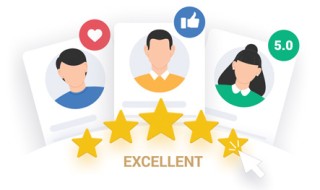 In today's digital age, where every action, every comment, and every review can significantly influence a brand's reputation, businesses are investing more time, effort, and resources into their digital reputation management strategies. As Mary Thompson, CEO of a top-tier marketing firm, states, "In this information-driven era, brand reputation is the currency. If you don’t manage it, it manages you."
In today's digital age, where every action, every comment, and every review can significantly influence a brand's reputation, businesses are investing more time, effort, and resources into their digital reputation management strategies. As Mary Thompson, CEO of a top-tier marketing firm, states, "In this information-driven era, brand reputation is the currency. If you don’t manage it, it manages you."
What is Brand Reputation Management?
Brand reputation management, at its core, is the proactive and reactive approach to crafting and maintaining the public's perception of a brand. It goes beyond just responding to negative reviews or feedback. It's about ensuring that a brand's identity, values, and messaging are consistent, authentic, and positively perceived.
Categories of Tactics for Reputation Management
Experts usually categorize reputation management tactics into three broad categories:
- Proactive Management: This involves crafting strategies and narratives that set a positive tone. This could be through thought leadership, community engagement, or social responsibility initiatives.
- Reactive Management: Responding to unforeseen events or feedback, ensuring that the brand's side of the story is understood and that steps are taken to remedy any genuine issues.
- Maintenance: Regularly monitoring online chatter, feedback, and reviews and staying updated with what's being said about the brand.
"Brand reputation isn’t built overnight. It’s a combination of well-thought-out proactive strategies, genuine reactions, and constant vigilance," notes digital strategist Alex Bernard.
Preserving Brand Identity and Reputation
Preserving brand identity and reputation involves ensuring the core principles and values of the brand are upheld in all actions and communications. It’s about walking the talk.
Testimonial from Alice Williams, a small business owner: "Ever since I started using reputation management tools, I've felt more in control of my brand’s narrative. Even a single negative comment can harm you, but being responsive and authentic can win you lifelong customers."
Understanding the Difference: Brand Management vs. Reputation Management
While the two terms may seem interchangeable, there's a nuanced difference. Brand management focuses on building and strengthening a brand's identity, positioning it favorably in the market, and ensuring it resonates with the target audience. Reputation management, on the other hand, centers on how that brand is perceived in the real world and online, and involves addressing any issues or perceptions that might tarnish its image.
The 4 Levels of Brand Management
- Basic Branding: Creating a recognizable logo, tagline, and a consistent color palette.
- Brand Strategy: Defining a brand's positioning, voice, target audience, and differentiation.
- Brand Extension: Expanding the brand's offerings or entering new markets.
- Brand Evolution: Adapting the brand to changing market dynamics and customer preferences.
PR or Marketing: Where does Brand Management Fit?
The line between PR and marketing is blurring, but traditionally, PR focuses on managing the public's perception, while marketing revolves around promoting products or services. Brand management encompasses both; it’s about promoting a brand and ensuring its positive perception.
4 Tips to Manage Online Reputation Easily
- Monitor Constantly: Use tools like Google Alerts or specialized reputation management platforms.
- Engage Constructively: Respond to reviews, feedback, and comments – both positive and negative.
- Craft Authentic Narratives: Be genuine in your communications.
- Educate Employees: Ensure everyone understands the importance of brand reputation.
Pillars of Reputation Management
- Transparency: Being open and honest in all dealings.
- Responsiveness: Addressing concerns in real-time.
- Consistency: Ensuring all touchpoints echo the same brand message.
- Integrity: Upholding ethical standards and values.
The Two Types of Reputation Management
- Offline Reputation Management: Engaging with traditional media, hosting events, and networking.
- Online Reputation Management: Monitoring and influencing digital narratives, including reviews, social media mentions, and news.
In conclusion, the art and science of digital reputation management is a multifaceted endeavor that requires a keen understanding of the brand, its audience, and the digital landscape. As we navigate the challenges of the digital age, mastering the craft of brand guardianship will undoubtedly remain an invaluable asset for businesses everywhere.



 Phone Consultation
Phone Consultation
 Request a quote
Request a quote
 Text a Message
Text a Message